15 Types of Gnats We All Wish Would Buzz Off [Identification Guide]
Author: Jen Worst | Editor: Omar Alonso
Review & Research: Jen Worst & Chris Miller
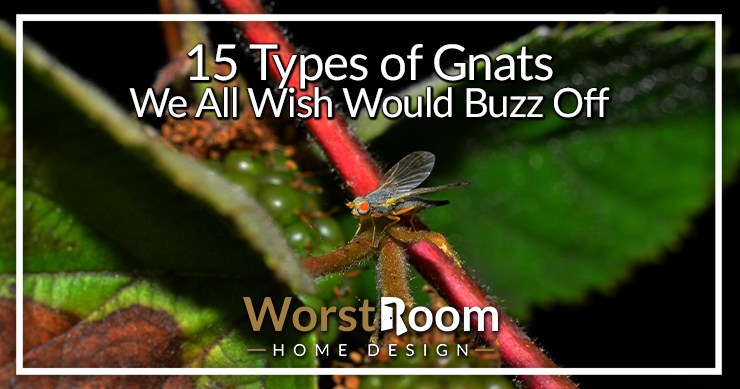
Any types of gnats are a complete no-no in any house. It's just very simple. You don't want them. They make a regular appearance in horror movies - that's the first bad sign. The other problem is that they are highly unsanitary, which makes them a threat to livelihood.
All gnat species carry some kind of bacteria, infectious diseases, etc. They visit all sorts of weird places and pick up the questionable matter on their bodies.
When they land on your food, they leave the questionable matter on it, which later causes you to deal with problems like food poisoning.
You have to terminate them as soon as you detect gnats in your home or on your plants. If you know the different types of gnats you are dealing with; it will help you in getting rid of them effectively. This article will help you identify them. So, get your gear all ready.
15 Types of Gnats
Gnats are always around us, even though the adult gnat lifespan is around two weeks. They just reproduce with such a fast life cycle. But they enter your houses habitually only during the cold months, so watch out when it's winter. Here are all the gnat types that you should look out for.
Fruit Flies
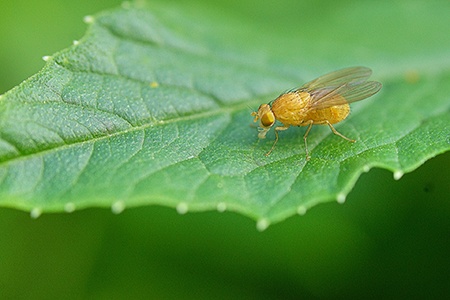
These gnats have a tiny yellowish body. They are only a third of the proportions of a common house fly, so they are pretty easy to see.
You are most likely to see fruit flies in fruits and veggies; hence, its name. But you might also see them in your bathroom as well.
Don't be surprised if you do. Even though there aren't any fruits in the bathroom, drains, trash bins, and any types of mops may attract these fruit flies.
You see, these flies don't come to the fruit in particular. They are attracted to fermenting matter. Therefore, overripe fruit, moist warm corners in the bathroom or kitchen, and even sweet drinks are magnetic to fruit flies.
Fruit flies are dangerous because they can transfer germs from one place to another. Agents of food poisoning are bacteria like E.coli, Salmonella, listeria, which fruit flies might spread.
Fungus Gnats
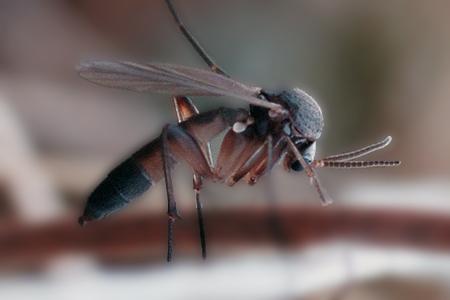
Fungus gnats also go by the name of 'winter gnats.' These tiny dark-colored insects are only about ⅛ inches in length. Even the adult fungus gnats are little.
But you won't have any problem spotting them because of their characteristically long legs and tiny head. When you do notice them, we've got the scoop on how to get rid of fungus gnats.
They almost look like mosquitoes except for their wings which are transparent but slightly bigger than typical mosquito wings. Fungus gnats can fly and hop as well.
These tiny flies feed on nothing but roots and fungi. They start infestation at the soil level. If you grow mushrooms in your basement, you need to clean those up and the dampness or you're going to have a serious gnat problem before long.
So, you don't necessarily have to worry about them getting in your food. These types of gnats don't like fermentation; they like organic decomposition.
Drain Flies
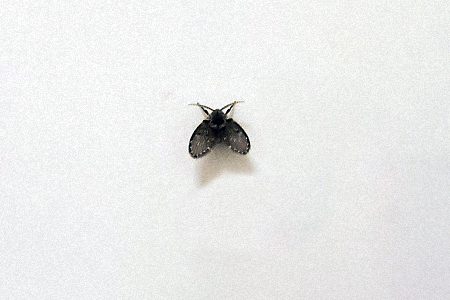
These are fluffy flies. You may consider them to be the tarantula version of flies. They are pretty small in size, though. These flies will only visit moist places that have an accumulation of nutrient-rich organic matter.
Inside the house, they will be found in drains or pipes that have been leaking filth for a long time. Outside the house, they can be found in logs and compost piles. Any place that is moist, nutritious, and decaying will host these flies.
These flies can reproduce in large numbers very rapidly. It only takes about 48 hours for their eggs to hatch.
The larvae usually grow to about 5 millimeters. As they grow into adults, tiny hairs start to grow on their hands, feet, and body to give them a fluffy appearance, as we mentioned already. Their wings are often light gray or tan.
Eye Gnats
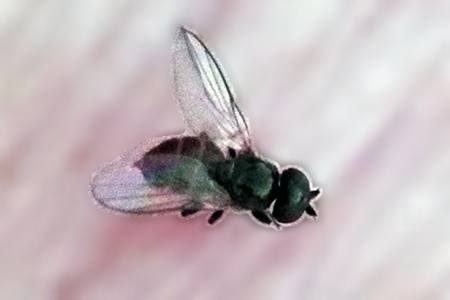
If you feel icky calling these 'eye' gnats, you may refer to them as 'grass flies' as well. But unfortunately, that won't change the fact that these eye gnats are pretty accurately named.
As their name goes, these gnats actually like all creatures' noses, eyes, and ears. Well, it's a bit less sinister than this. Eye gnats are attracted to the liquid secreted by these organs, not the organs themselves.
Buffalo Gnats
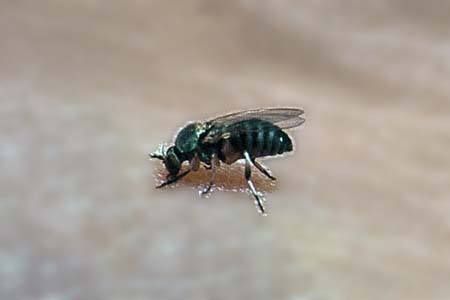
Buffalo gnats are scary, humpbacked flies that grow to ⅛ of an inch. These flies are small and dark.
So they are often called black gnats as well. They are most commonly seen in early summer and late spring because they are attracted to the nectar in flowers.
These types of gnats bite humans, birds, and animals when it's time because they need proteins to reproduce. These flies like to keep their eggs near clean water. So you might find them in plenty around lakes and streams.
Phorid Fly
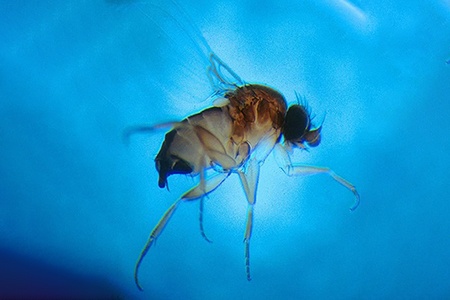
These flies are also slightly hunchbacked. They are usually found in colors that fall in the range of tan and dark brown.
Adult phorid flies are very active when the weather is slightly warmer. They feed on moist and decaying organic matter.
The most prominent feature of the phorid fly is the hunchbacked shape of its thorax. The adult phorid flies are most active during the warm months of the year and primarily breeds in and feeds on the moist decaying organic matter.
Sand Flies
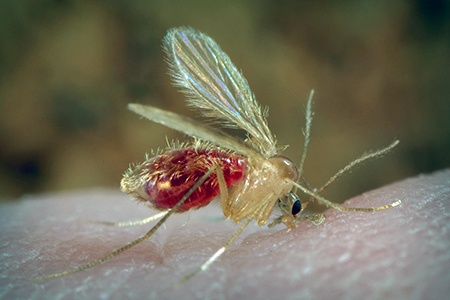
Much like a mosquito, sand flies will bite you to drink your blood. However, the itches and inflammation they leave will be much more prominent and painful than that of mosquitoes.
These flies look very transparent. Only the veins and capillaries that run through them are slightly golden in color. You can see through the rest of its body. These flies are usually found in swampy areas that have a good proportion of wet sand.
Stable Flies
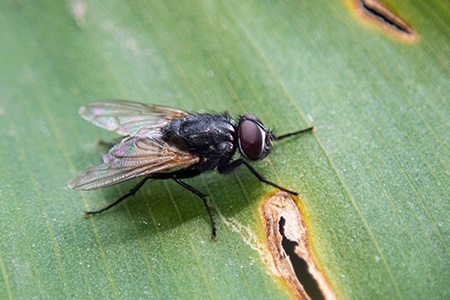
These stable flies bite! And they bite hard because you'll be in pain once one fixates on your skin.
The pain will feel something like a needle's hard prick. The most likely place for them to be in is near stables (that's the namesake), kennels, and along the shore.
These types of gnats are about ¼ of an inch in length. They look pretty gnarly. Their body has patterns in black and white that look very much like scales.
Unique-Headed Bugs
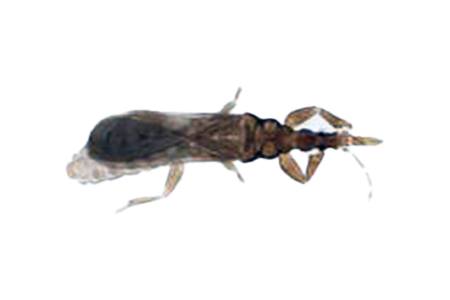
These types of gnats are called unique-headed bugs because they have, compared to other gnat types, really long heads that has several "bulbs". There's around 130 species of these critters, found in various micro-environments.
You can find them in piles of decaying leaves, under rocks, and in sunny woodlands with plenty of places to feed and find shade. Their body doesn't have the same large basal area as others, and their probosci have four joints.
They're carnivores too, with front legs that are capable of grabbing their prey. Like other gnat species, they get all of this busy life underway fast, as their life cycles tend to be at max around four weeks.
Hessian Fly
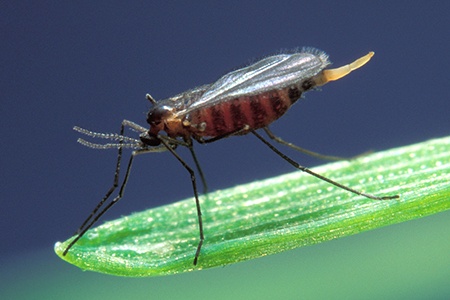
The Hessian fly found is named as such because they hitched rides out of Europe on ships with Hessian warriors.
These little buggers plant their eggs in wheat fields, where the larvae do massive damage to the crops. It's estimated that they cause multiple millions of dollars in losses each year.
The larval gnats feed on wheat seeds until they can form a cocoon which falls to the ground and gets covered in dirt. This acts a camouflage to help them survive until they can emerge after just over a week's time.
Gall Gnats
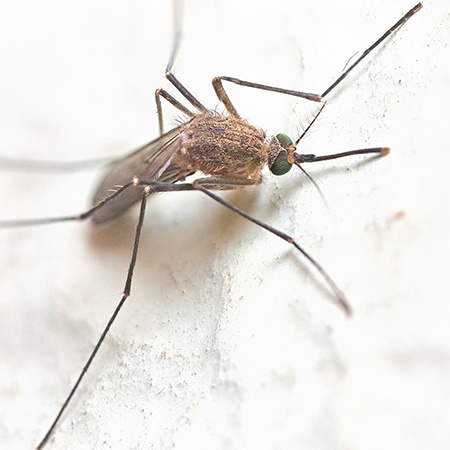
These gnat types attack plants and cause abnormal bulby growths on them. They have long antennae and a few spiky hairs on their very slender legs.
These gnats look as fragile as they are. However, their effects are toxic to plants but not to humans.
But, it still doesn't mean that they have no harmful impacts on humans - they can, in fact, cause severe damage to farmers by infesting crops and leaving entire fields devastated.
Blow Flies
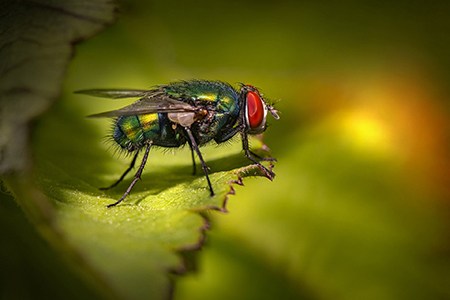
These gnats are mostly found around decaying animals, which makes them extremely unhygienic and extremely gross. And yet, there is some poetic beauty to their appearance. Their bodies have a metallic sheen that shifts between duo chromatic blue and green colors.
The length of these types of gnats will be somewhere between ¼ to ½ inches. They look pretty strong with their big maroon heads and a visibly lighter shade of maroon on their eyes.
These flies usually infest plants, flowers, and other sugary nooks. Sometimes the females branch out a little bit to lay their eggs on the bodies of dead animals.
Dung Flies
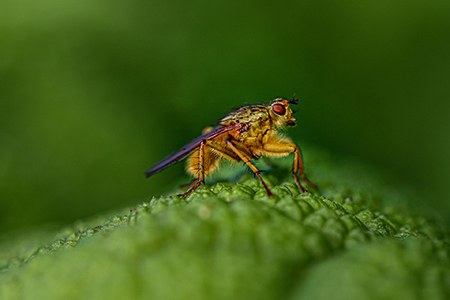
Another name for dung flies is Sphaerocerid flies, but we think that 'dung flies' suit them better, seeing as how these flies are born in manure.
When it comes to dung flies, there are two different types of gnats: yellow dung fly and lesser dung fly. Yellow dung flies are a gross shade of yellow, while the lesser ones are dark black.
These flies don't come to infest your homes, thankfully. They often get their nutrients from dung, or the nectar of flowers, and occasionally from other small insects.
Highland Midges
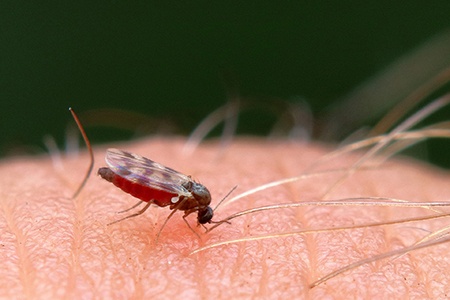
We have left the worst gnat species for last. If you're visiting Scotland and Wales, be on the lookout for any swarm of insects that seem to be flying at you, for they just might be those highland midges.
They have a wingspan of around 3 mm, but they are bloody savage. They will bite you and leave you with painful red bites in any part of your skin that was exposed. People call them no-see-um gnats because they're so small, you just feel the sting out of the blue.
Common Housefly
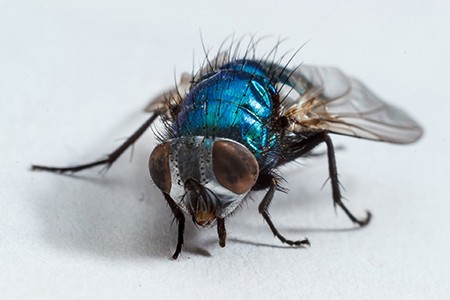
You have definitely seen these common house flies flying around in someplace or the other. These flies have bodies that are usually ⅙ - ¼ inches in length. There are black and white stripes all over them, no matter what age they are.
Adult flies have a sharply-angled fourth vein in their wings that young ones don't have. This extra vein gives them a fuller look.
Female house flies have a wider space between their eyes than males. But both genders have velvety eyes that are separated by two lines of silver and gold.
These flies don't bite, but they spread disease by transferring bacteria through their hairy legs. They are known to spread over 65 diseases like this.
Types of Gnats That All Annoy Us
With 900 thousand species of insects in the world, it is no surprise to anyone that so many types of gnats exist.
I do hope we can all agree that we dislike gnats. Personally, I think that the growing population of humans should be pretty wary of the ever-growing population of insects, lest we are driven out of our houses by these tiny gnarly bits.
So, make sure you get rid of them as soon as you see one. All of the types of gnats breed super fast, so please don't take your time when dealing with these.



